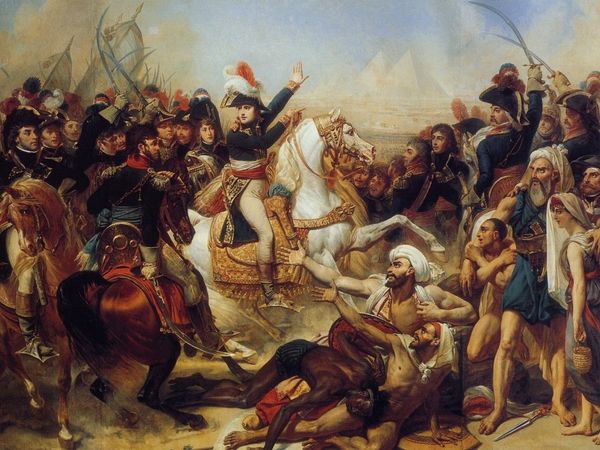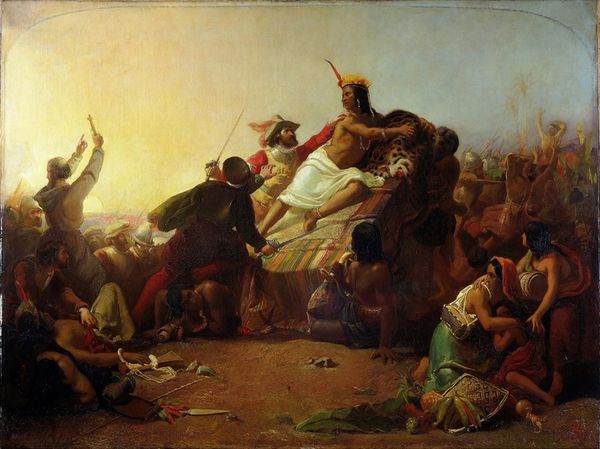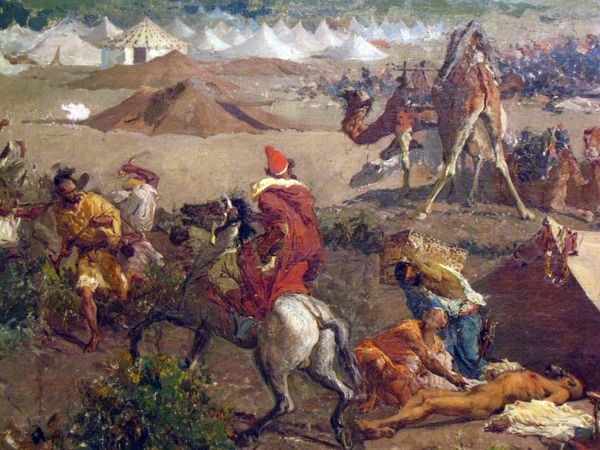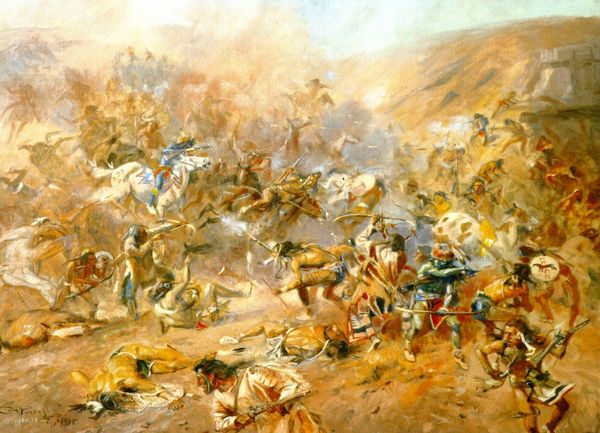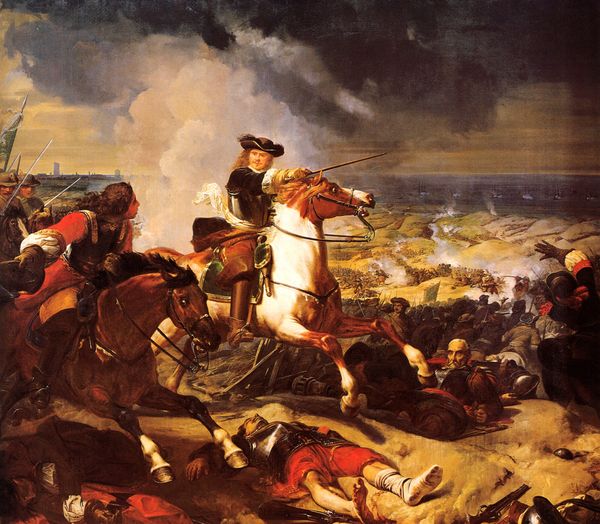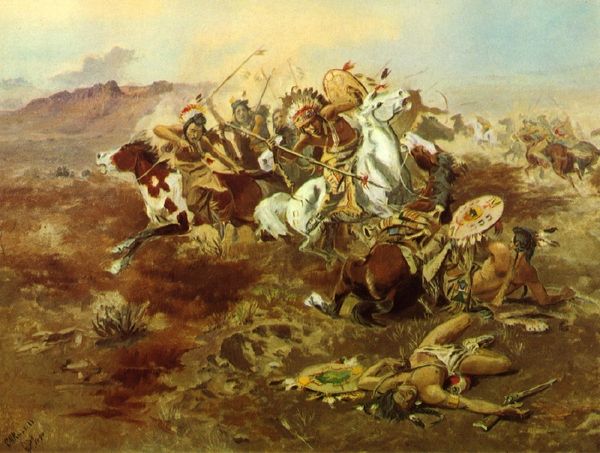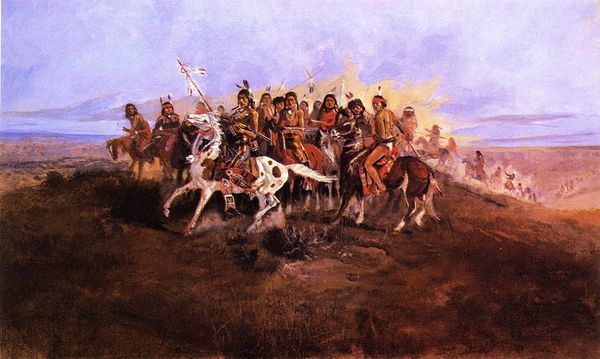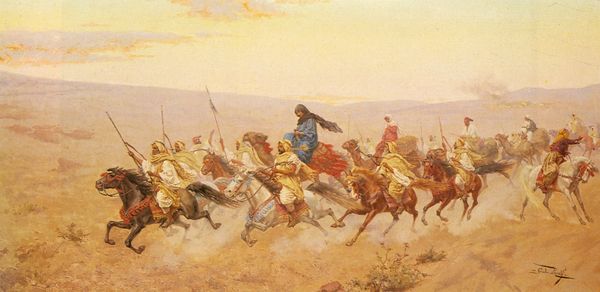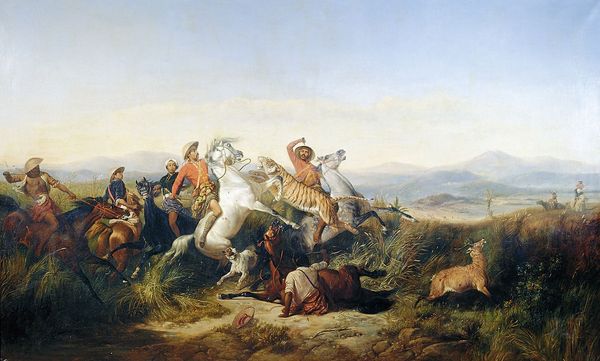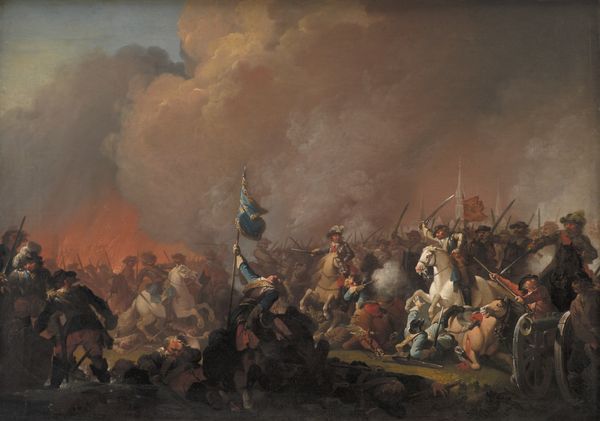
painting, oil-paint
#
narrative-art
#
painting
#
oil-paint
#
landscape
#
figuration
#
oil painting
#
romanticism
#
history-painting
Copyright: Public domain
Curator: Albrecht Adam’s piece, titled "After the Battle of Wagram, July 6, 1809," captures a moment freighted with historical significance, yet… it's a tough painting to fully embrace, isn't it? Editor: Immediately, the overwhelming orange haze, it's… unsettling. A sepia-toned apocalypse! Is that the glory of victory hanging in the air or the stench of loss? It feels so dense, emotionally heavy. Curator: Right, that amber glow, which is consistent with a landscape painting in the romanticism style, evokes not only the literal smoke and dust but also the symbolic weight of conflict and its aftermath during the Napoleonic Wars. Adam, being there at the battle, creates more than an image; he makes it an artifact with complex layers of militarism, class, and nationalistic values. Editor: The eye dances across scattered figures, a landscape littered with broken bodies and war detritus. There is drama but from the artist's point of view; detached as it comes across like war is observed not really felt. It makes me wonder who Adam created this work for. Was it a celebration of martial accomplishment or some other commemorative exercise? Curator: A vital question. Keep in mind that history paintings, even ones made fairly contemporaneously with events, tend to promote or affirm ideological and social order. These weren't just representations of war, but actively helped to construct the memory and impact of events like this in cultural understanding. In Adam’s other war images, we also see an attempt at an idealized vision. Editor: Interesting, there's a strange romantic allure coupled with its gritty aftermath—makes it feel contradictory. The painting lures us in while reminding us war never resolves itself to simplistic views. I have seen romanticized paintings, but something like this humbles the thought and offers instead the tragic consequence and memory of war in equal measures. Curator: That very push-and-pull, artistically crafted, highlights the difficult legacy surrounding battles and Napoleon himself. Perhaps these tensions are the key to appreciating the cultural role played by history-paintings like this, forcing continued debate about these conflicts even now. Editor: It reminds you war should not be easily interpreted or understood... something museums must promote beyond pretty visuals of famous paintings. Well, after reflecting on "After the Battle…" my perceptions of it are more involved and nuanced than before we began this little chat, for sure. Curator: Indeed. And that's the enduring purpose and power of art: compelling us to consider historical impacts through the artist’s perspective.
Comments
No comments
Be the first to comment and join the conversation on the ultimate creative platform.

